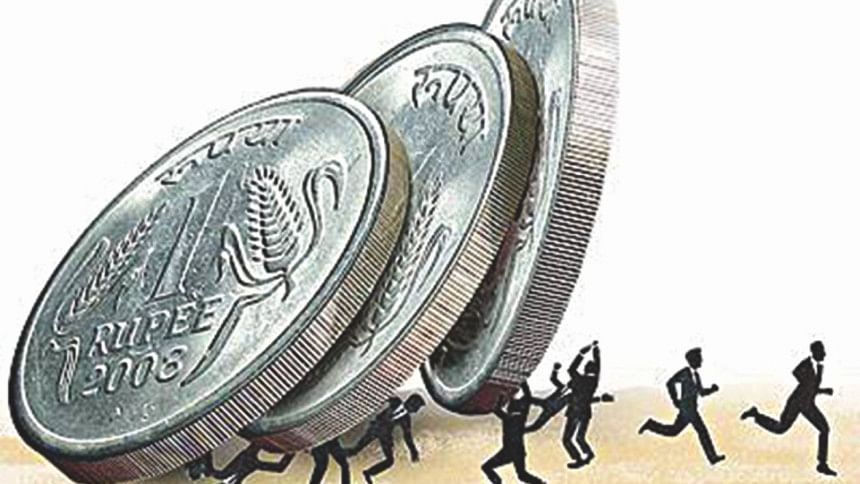India's investment anemia


It has been 18 months since Narendra Modi became India's prime minister, following his Bharatiya Janata Party's historic general-election triumph. The BJP's overwhelming victory brought sky-high expectations that India's economy, unshackled from the indecisiveness of the previous Congress-led government, would soar. Yet, as 2015 comes to a close, the Indian economy is hardly flying high.
The optimists are right to feel disappointed, because they had genuine cause for hope. Given India's large deficit in physical capital, they expected investment to rise as shovel-ready projects were restarted – and surely the new government's emphasis on “Make in India” would mean new manufacturing projects.
Sadly, investment has not grown. More disturbing, several obstacles blocking its revival remain in place. Private-sector fixed-capital investment, as a share of GDP, peaked at 33.6% in 2011-2012 and has since trended down to the current low of 28.7% in 2014-2015. And this weakness is a countrywide phenomenon, with all major states registering a decline in ongoing projects over this period. Maharashtra and Karnataka, for example, both experienced a cumulative decline of about 15% in projects; the declines in Gujarat and Tamil Nadu were sharper, at more than 20%.
As for “Make in India,” the reality is that capacity creation in manufacturing has suffered a cumulative decline of 35% from its peak in 2011. The cumulative decline in services, at 13%, looks moderate in comparison.

One factor holding back investment is that major reforms, especially regarding land acquisition, simply have not happened. And, given parliamentary gridlock, the prospect of pushing through tough reforms appears bleak. As a result, the central government has preferred simply to delegate some of the task to state governments.
Decentralisation is in line with the recommendations of the 14th Finance Commission, the body that defines fiscal relations between India's central and state governments. But while there are several benefits to be derived from strengthening India's fiscal federalism, an important downside is that it signals a dilution of the central government's ambition at the state level.
A second factor holding back investment is the continuing financial problems of Indian banks and of many large corporations. Despite significant action by the Modi government – for example in auctioning coal licenses – corporations and banks exposed to the mining and infrastructure sectors still have stressed balance sheets.
In fact, the problem is broader. According to a recent report by Credit Suisse, 17% of Indian bank loans are stressed, a significant share of which may not be repaid. Just as the process of land acquisition needs major reform, bankruptcy reform will be essential to place the corporate and financial sectors on a sound footing. Stagnant investment in Japan and several eurozone countries demonstrates the folly of allowing corporate-debt overhangs and non-performing loans to go unresolved. India must settle these issues before they turn chronic.
A third factor creating a drag on investment is the real cost of borrowing. Despite the Reserve Bank of India's success in taming inflation – with help from falling commodity prices – nominal interest rates have not fallen in line. In terms of the consumer price index, the real cost of borrowing (cash credit) from public-sector banks rose from 0.75% in the first quarter of 2012 to 5.24% in the third quarter of 2015. This increase is larger when measured using wholesale manufacturing inflation. As a consequence of stressed balanced sheets, and anxious to rebuild their strength, banks are reluctant to pass through to their customers the RBI's recent rate cuts.
If CPI inflation remains at the current level of 4-5%, the grounds for further RBI rate cuts is compelling. There are, however, strong headwinds arising from the global economy. However gradually the US Federal Reserve raises interest rates, there will be spillovers onto the Indian economy, including pressure to devalue the rupee. Such pressure may raise inflation and increase the strain on the balance sheets of Indian corporations that borrowed heavily in dollars to take advantage of the Fed's ultra-low interest rates. Faced with this risk, the RBI may want to keep rates high, thereby delaying the investment that would come from access to cheaper money.
External conditions will also hold down investment in 2016. The US economy has recovered, but the Chinese motor has slowed markedly, and growth in Japan and much of Europe remains sluggish. That inevitably means fewer incentives in India to invest in export-oriented sectors.
But, whatever the state of the global economy, the bottom line is that India cannot attain its potential without a strong revival in investment. If the economy is to achieve the double-digit growth rates that China once boasted, India will need to build much more production capacity and much more infrastructure.
The solution cannot be to focus primarily on public-sector investment or to woo foreign investors, which is policymakers' current approach. Instead, in 2016 the Modi government must build the political consensus required to press ahead with the major reforms needed to remove the obstacles blocking India's progress.
The writer is a Professor of Economics at Harvard University. She is a visiting scholar at the Federal Reserve Bank of Boston, a research associate with the National Bureau of Economic Research, and a World Economic Forum Young Global Leader.
Copyright: Project Syndicate, 2015.
www.project-syndicate.org
(Exclusive to The Daily Star)

 For all latest news, follow The Daily Star's Google News channel.
For all latest news, follow The Daily Star's Google News channel. 



Comments